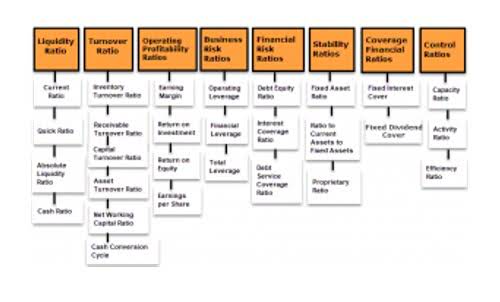
Your retained earnings account on January 1, 2020 will read $0, because you have no earnings to retain. Retained earnings are like a running tally of how much profit your company has managed to hold onto since it was founded. does retained earnings have a credit balance They go up whenever your company earns a profit, and down every time you withdraw some of those profits in the form of dividend payouts. Above example shows the debit balance in the cash account (By Balance c/d) which is shown on the credit side. When a company makes a profit at the end of its financial year, its shareholders may decide to allocate part of the profit to retained earnings.
- The RE balance may not always be a positive number, as it may reflect that the current period’s net loss is greater than that of the RE beginning balance.
- Instead, the balances in the income statement accounts will be transferred to a permanent owner’s equity account or stockholders’ equity account.
- This amount is usually held in a reserve by the company and could be used to increase the company’s asset base or reduce some of its liabilities.
- Part of the benefits investors receive for purchasing shares in a company is the payment of dividends that they receive either quarterly or yearly depending on how often the company declares distributions.
- Additional paid-in capital reflects the amount of equity capital that is generated by the sale of shares of stock on the primary market that exceeds its par value.
Q: What is a journal entry for Retained Earnings?
Consequently, the amount of the credit balance does not necessarily indicate the relative success of a business. Retained earnings represents the portion of a company’s net income that is reinvested in the business rather than distributed to shareholders as dividends. It accumulates over time and can be used for expansion, debt repayment, research and development, or other corporate needs. Negative retained earnings, known as an accumulated deficit, indicate that a company has incurred more losses than profits over time. In other words, the temporary accounts are the accounts used for recording and storing a company’s revenues, expenses, gains, and losses for the current accounting year.

minutes to understand retained earnings and how to account for them
Cash dividends result in cash outflows and are recorded as net reductions. As the company loses liquid assets in the form of cash dividends, its asset value is reduced on the balance sheet, thereby impacting RE. Retained earnings refer to the historical profits earned by a company, minus any dividends it paid in the past. To get a better understanding of what retained earnings can tell you, the following options broadly cover all possible uses that a company can make of its surplus money. For instance, the first option leads to the earnings money going out of the books and accounts of the business forever because dividend payments are irreversible.
How Dividends Impact Retained Earnings
Alternatively, a large distribution of dividends that exceed the retained Bookkeeping for Etsy Sellers earnings balance can cause it to go negative. Your Bench account’s Overview page offers an at-a-glance summary of your income statement and balance sheet, allowing you to review your profitability and stay on top of your cash flow from month to month. Spend less time figuring out your cash flow and more time optimizing it with Bench. There will be a negative amount of retained earnings if cumulative earnings minus the cumulative dividends declared results in a negative amount.
- Hence retained earnings are the company’s past earnings that have been kept by the company instead of being distributed to shareholders as dividends.
- To get started, let’s review some facts that you should already be aware of as a bookkeeper, accountant, small business owner, or student.
- In accounting software like QuickBooks, what is retained earnings QuickBooks refers to the account used to track the retained earnings of a business.
- Kpi.com offers monthly, quarterly, or annual management financial reports produced to local and international financial reporting standards.
- A company may decide not to redistribute all or part of its profits to shareholders or to add to its reserves.
Free Course: Understanding Financial Statements

The par value of a stock is the minimum value of each share as determined by the company at issuance. If a share is issued with a par value of $1 but sells for $30, the additional paid-in capital for that share is $29. As a result, any factors that affect net Certified Public Accountant income, causing an increase or a decrease, will also ultimately affect RE. Revenue is the total amount of income generated by the sale of goods or services related to the company’s primary operations.

Net income increases the balance in the Retained Earnings account, so we would credit the Retained Earnings account by $20,000. Yes, retained earnings are a key component of equity because they represent the part of net income a company retains and reinvests into the business. Over the same duration, its stock price rose by $84 ($227 – $143) per share. A maturing company may not have many options or high-return projects for which to use the surplus cash, and it may prefer handing out dividends.
Balance Sheet Accounts are Permanent Accounts
The amount of a corporation’s retained earnings is reported as a separate line within the stockholders’ equity section of the balance sheet. However, the past earnings that have not been distributed as dividends to the stockholders will likely be reinvested in additional income-producing assets or used to reduce the corporation’s liabilities. The main difference between retained earnings and profits is that retained earnings subtract dividend payments from a company’s profit, whereas profits do not. Where profits may indicate that a company has a positive net income, retained earnings may show that a company has a net loss, depending on the amount of dividends it paid out to shareholders. When the retained earnings balance of a company is negative, it indicates that the company has generated losses instead of profits over the period of its existence. Most companies that have a negative retained earnings balance are usually startups.
Significance of retained earnings in attracting venture capital
Retained Earnings (RE) are the accumulated portion of a business’s profits that are not distributed as dividends to shareholders but instead are reserved for reinvestment back into the business. Normally, these funds are used for working capital and fixed asset purchases (capital expenditures) or allotted for paying off debt obligations. A current asset is any asset that will provide an economic benefit for or within one year. Retained earnings refers to the amount of net income a company has left after paying dividends to shareholders. Closing revenue accounts and transferring credit balances from revenue accounts to a clearing account known as Income Summary are the four basic steps in the closing process.
- If a company can use retained earnings to generate above-average returns, it should keep those earnings rather than paying them out to shareholders.
- This allocation does not impact the overall size of the company’s balance sheet, but it does decrease the value of stocks per share.
- As a result, any items that drive net income higher or push it lower will ultimately affect retained earnings.
- Additional paid-in capital is included in shareholder equity and can arise from issuing either preferred stock or common stock.
- He has been a manager and an auditor with Deloitte, a big 4 accountancy firm, and holds a degree from Loughborough University.
- So, the amount of income summary in the journal entry above is the net income or the net loss of the company for the period.
It’s just an account where the net income or net loss for each year is stored eternally, so it’s just the total net income or loss the corporation has achieved in its existence. Yes, retained earnings typically have a credit balance, as this indicates the company has accumulated profits over time. A debit balance would suggest the company has incurred losses or has distributed more dividends than it earned. Retained earnings are a type of equity and are therefore reported in the shareholders’ equity section of the balance sheet.